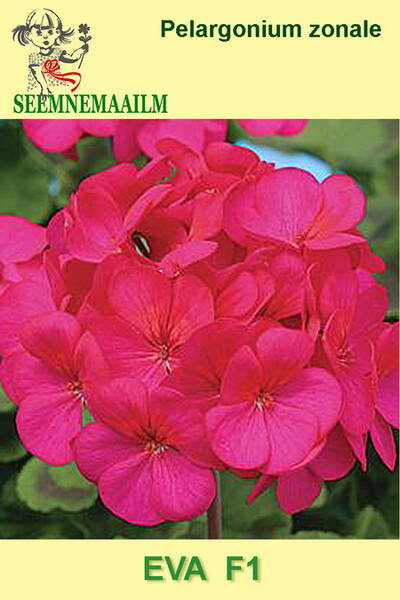Perennial plant, 30-35 cm high, grown both in garden and indoor conditions.
Great hybrid! Forms a voluminous and compact bush 30-35 cm high. Simple large flowers are collected in huge caps of spherical inflorescences, up to 12 cm in diameter.
The variety is early compact, with expressive foliage (leaves of green color with brown tints along the edge). Flowers of red-violet color are collected in large spherical inflorescences, bloom profusely throughout the season until frost (each plant forms 50-60 inflorescences per season. It is distinguished by increased uniformity and unusual abundance of flowering.
Plants are photophilous, but can grow in partial shade, are relatively cold-resistant, drought-resistant and need light nutrient soils. Seeds for seedlings are sown from January to September in loose light soil. Crops are covered with film or glass and placed in a bright and warm place. At a temperature of + 20 + 21 ° C, shoots appear on the 5-7th day. With a lack of light, the seedlings stretch out and die. Dive when 2-3 true leaves appear. It can be planted in the garden from the end of May, when the threat of frost has passed.
1.0 g = 150-200 seeds.
CARE TIPS.
Temperature: Moderate, about +18+20 ° C, and in winter it is better about +13+15 °C, but not lower than +12 ° C. Pelargoniums need fresh air, so take them out to the garden or balcony in summer.
Lighting: Pelargonium is photophilous, responds well to direct sunlight. Good for a south or west window. With a lack of light, pelargoniums grow little leafy and bloom not so profusely.
Watering: In spring - plentiful in summer, the soil should be slightly moist. Pelargoniums do not tolerate a strong excess of water, and often this causes a disease called black leg. To avoid stagnant water in the roots, make good drainage in the pot. In winter, watering is more rare, about once every 10 days, the soil should dry out.
Fertilizer watering during the period of active growth from March to August after two weeks, liquid fertilizer for flowering houseplants (potash fertilizers). If there is a lack of nutrients in the soil, then young leaves become smaller. The dose of fertilizer is taken as recommended in the instructions.
Humidity: Pelargoniums do not need spraying or other air humidification, it is better not to put pelargonium next to those plants that love humid air and are regularly sprayed so that water does not fall on the leaves once again.
Transplantation: If necessary in the spring, usually after two years, the top layer of the earth can be replaced annually, without the actual transplanting of the plant. The pot should not be too large, as pelargonium blooms better if the pot is slightly cramped. Pelargonium grows on almost any fertile soil. One of the options for the soil mixture is 1 part sod, 1 part leaf, 1 part humus, 1 part peat soil and 1 part sand.
Propagation: Cuttings at the end of winter or at the end of summer, so they take root better. And also seeds.
Eng.: Horseshoe pelargonium. Suom.: Pelargoni. Sven.: Pelargon.











